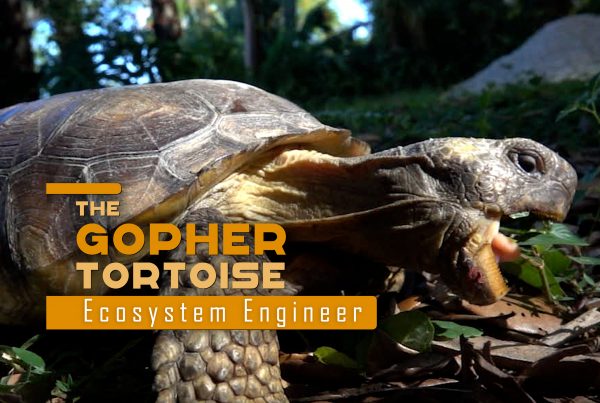It’s mangrove baby-making time!!
Viviparous: of animals, giving birth to live young. Of plants, reproducing from buds that form plantlets while still attached to the parent plant, or from seeds that germinate within the fruit.
Embryo: an unborn or unhatched offspring in the process of development
Propagule: a vegetative structure that can become detached from a plant and give rise to a new plant,
Germinate: (of a seed or spore) to begin to grow and put out shoots after a period of dormancy.
Life Cycle of the Red Mangrove
When we cut open a fruit like this juicy apple or even this dry bean pod, we find seeds inside. A fruit is a ripened ovary containing seeds. You may have learned that the ovary is part of the pistil of a flower.
When most fruits fall to the ground, the outer ovary wall rots away, and when the seeds come into contact with the soil they germinate. Out of each individual seed sprouts the embryo of a new plant. But the red mangrove tree, which grows in the salty waters of the coast, does things much differently.
When it is mature, the red mangrove bears yellow, four-petaled flowers that are smaller than the tip of my finger. The ovary of the flower develops into a small fruit that grows to almost the size of a plum.
But while flowering plants normally bear fruits that fall to the ground so their seeds can germinate, this isn’t the case with the red mangrove. Believe it or not, the seed of the red mangrove germinates while the fruit is still attached to the tree. It happens when the fruit is tiny and not even fully developed.
Humans are viviparous, meaning the embryos develop inside the body of the mother and the mother gives live birth. A handful of plants are also considered viviparous with embryos developing inside ovaries while they are still attached to the parent plant. This is a rare thing in plants, but it is exactly the case in the red mangrove.
While the red mangrove fruit is still quite small, the root of the developing embryo begins to poke out.
It grows longer and longer – up to 6” or more. Eventually, the embryonic plant, which we call a propagule, breaks free from the fruit and falls into the water where it floats along horizontally. Some people call this a sea pencil.
Now at the mercy of the tides and the waves, the propagule may float for more than a year and wind up far from the parent tree. This has proven to be an incredibly efficient method of propagation and today we can find red mangroves on tropical and subtropical coasts around the globe.
The tip end of the root is the heaviest part of the propagule. As it becomes more water-logged it begins to float vertically, and eventually, perhaps during a low tide, it becomes planted in the mud. Side roots soon sprout to anchor it even better. At the top end of the propagule there is a tiny cone of embryonic leaves. With the root now firmly planted, the leaves begin to gather sunlight and grow.




